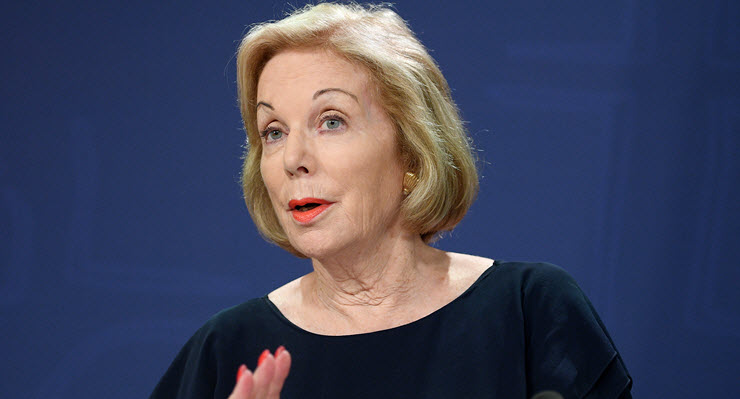
The media have long been male-dominated. Ita Buttrose, 79 and now chair of the ABC, previously served as the editor-in-chief of the The Daily Telegraph and The Sunday Telegraph in 1981, making her the first female editor of a major metropolitan newspaper in Australia.
But what’s changed since then? Well, according to a new report by Women’s Leadership Institute Australia, not enough.
Conducted by academic and journalist Jenna Price and research fellow at the Global Institute for Women’s Leadership at the Australian National University Dr Blair Williams, the report found women’s voices rarely make it to publications’ top spots, with women more likely to write about health and arts and entertainment, and men less likely to quote female sources.
What did the report find?
Analysing more than 57,000 online stories, and 4000 top-billing stories — either on page one of the print edition or on the top spot of a website — the report found men have the first (or only) byline for 65% of stories.
Women write 53% of health articles and 44% of arts and entertainment articles, while men write 65% of politics and 87% of sports stories. Men are also entitled to have an opinion about everything, accounting for 65% of all opinion pieces covered.
Men are significantly less likely to quote women; while women quote women about 50% of the time, men quote women in just 37% of their stories, meaning in total 31% of quotes are attributed to women. Even on gendered topics like health this is true: throughout the pandemic, women provided just 27% of quotes about COVID-19.
Just 26% of stories in The Australian Financial Review are written by women, and 31% in The Australian. In comparison, 61% of stories published in The Daily Telegraph were written by women.
Media organisations’ boards are also failing to reach gender parity. Two out of nine board members at Seven are women and just four out of 13 at the New Daily.
How did Crikey do?
Crikey’s sample size was too small to be represented in most of the data, including how many stories are published by women. Anecdotally, there are too few: some days when I or news editor Georgia Wilkins are editing instead of writing, no stories written by women make it in the edition.
Just 33% of the most prominent articles mention female subjects, while 90% mention men in Crikey. Of our top-billing articles, just 20% are written by women.
Without making excuses for Crikey, there are some caveats. We are a small team of just 13 editors, reporters and production staff, five of whom are women. Wilkins and I have been promoted to editing roles. Bernard Keane the machine files double to triple the number of stories the other journalists do, skewing the data.
We don’t cover entertainment, lifestyle or sports, meaning who covers what is less gendered than at other publications.
We are making improvements. Many of our op-eds are written by women such as Margot Saville and Janine Perrett, and the whole editorial team recently underwent Our Watch sexual violence reporting training. Next week we’ll all participate in inclusion and diversity training.
But our representation isn’t great, and Private Media needs to do more to amplify women’s voices.
What can be changed?
Buttrose has caused a massive influx of women in media top jobs since the ’80s. But disparity and bias is still alive and well.
Media organisations must continue to improve, whether by training women for top positions, addressing the gender pay gap or training staff to comfortably cover topics such as sexual violence.
Journalists too should do better, by approaching more diverse academics and experts for comment — such as through the Media Diversity Australia page — and questioning why they use the same source over and over again.
And editors need to look at coverage with a gendered lens, pushing important stories to the top of the page without bias and encouraging female journalists to speak their minds and write their opinions.








This is rather poorly worded and lends itself to over-interpretation. The report says that 31% of quotes are attributed to women in the big picture data set. The report goes on to say that in the top billing data set women quote women in 50% of their stories, and men quote women in 37% of their stories.
The report continues that in the top billing data set:
I think its pretty clear that gender issues continue to play a major role in the workplace in my own experience – female colleagues frequently spoken over, ignored, or harassed.
In the media I think it is also quite apparent – especially in how issues are covered; think Brittany Higgins, the woman allegedly assaulted by Christian Porter, Grace Tame. Men’s voices complaining about women standing up for themselves were overwhelming.
Looking forward to the crikey bro readers (basically australian bernie bros i guess) arc up to these stories.
Thanks Amber, you are at the forefront of making a difference
Strangely, whilst I can’t back this up with data – I also feel that on the whole women are often a whole lot better at this journalism thing then their male counter parts 🙂
I believe that equal pay earns equal respect, equal opportunity and equal promotion. Psychologically, it’s all about money.
The Anglo Saxons never got over the chip on the shoulder delivered by the Normans in 1066…